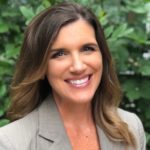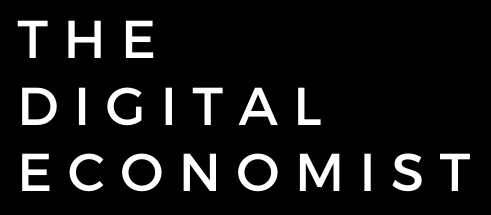
In Joseph Campbell’s landmark book entitled The Hero with a Thousand Faces, he illustrates common patterns running through hero myths and stories from around the world. He discovered several basic stages that almost every hero-quest goes through, and we could not fail to notice the many client leaders we serve follow a similar arc in their journey toward impact.
It is our pleasure to introduce a Black Fox Philanthropy series entitled “The Hero’s Journey”, profiling these extraordinary leaders and their hero’s journey. Our inaugural spotlight is upon Heather Hiebsch of TeachUNITED, who was chosen to kick off the series in light of the quantum leap forward her organization experienced in 2019.
Heather Hiebsch | Co-Founder & Executive Director | TeachUNITED
Part I: A Call to Adventure
What was the transformative moment you realized you must respond to a call to action, and where did that call to action come from?
From an early age I knew that I wanted to teach. In my childhood bedroom, I would create math problems and then pass them out to my dolls. I’m serious. I would accompany my dad (a chemistry professor) to the university where he worked, and I would find an empty classroom and spend hours drawing on the chalkboard to my pretend students. In fourth grade, I had my favorite teacher (Mrs. Shields), and in high school I found my favorite subject (science). My undergraduate degree at the University of North Carolina was part of the Teaching Fellows Scholarship program, and when I entered my first year of teaching, I was motivated to change the world for my students. I had visions of Michelle Pfeifer in Dangerous Minds and Mr. Miyagi in Karate Kid. It was going to be awesome.
Part II: Supreme Initiation
What do you consider your point of “entry into the unknown?”
Reality hit early, and it hit hard. I was assigned multiple classes with no resources; dozens of kids with a wide array of socio-emotional and learning challenges; more acronyms than I was equipped to handle; frequent testing without purpose; and a public education policy that changed on a daily basis and held teachers solely accountable. While I had teacher friends and a great mentor in my building, I did not have supportive leadership during the most difficult times. And it was crushing.
Eventually, I realized that my calling was to be the kind of educational leader I wish I had. So, when I was asked by my local school district in Colorado to open a new “school of innovation,” I was expected to find the best curriculum, the newest technology, and boost enrollment as quickly as possible. Instead, I focused first on the teachers. I hired teachers, faculty, and staff who cared about their classroom culture, were willing to develop and try new ways of teaching, and wanted nothing more than to help kids succeed. They were the “pioneers” of growth-mindset, hybrid schedules, and mastery based learning. And our kids’ academic growth sky-rocketed. Students who were on the verge of dropping out one year ago were making double-digit gains, re-engaged in school, and planning incredible futures. Teachers were happy, and my bucket was full.
Then I saw the UNESCO stat: 250 million kids cannot read, write, or do basic math perpetuating a crushing cycle of issues such as poverty, violence, growing climate crisis, and gender inequality. While there are a lot of variables within that statistic, decades of research shows that teacher quality is the single biggest school-related factor for a child’s success. I thought to myself, “What if those kids had these incredible teachers? And what if those teachers had leaders who truly cared and supported them with the training and resources they needed to be successful?” Could we actually change the lives of millions of children?
And with that, after seven years of being the founding principal of my incredible school, I left my job and co-founded TeachUNITED.
My goal: provide training, resources, and support to any teacher, anywhere.
Part III: Unification/Transformation
What was one of your greatest obstacles?
We quickly realized that our biggest challenge was to create a standardized teacher coaching program that could both work anywhere and be human-centered enough to customize for local culture, language, and customs.
For example, we set a goal of providing access to teacher support for all schools, including those off-the-grid or in “last mile” locations. I remember visiting a partner school in Tanzania. One of the lead teachers had been in the TeachUNITED program for a little under two years. He had embraced the challenge of limiting his lectures and increasing student group work. This teacher practiced a blended learning station-rotation model, and I watched in awe, knowing that this school had no internet, electricity, or running water. He was designing lessons that were engaging with a tablet and offline server powered by solar panels. It was amazing, and exactly what we had envisioned.
That afternoon, I joined one of his students at her home. It was a two hour walk from the school, but she was thrilled to join us in the car that day. Nimbris told me how much she enjoyed the new lessons, including group work and using technology. Her home was a small boma made of mud, sticks, and fire ash, and she completed her homework using a single solar lamp. Like her teacher, I was in awe of Nimbris’ perseverance. She casually mentioned that most girls in her village would get married and have babies soon (she was 15). But she wanted to become a nurse. Around dusk, we were wrapping up our visit, and she remembered that she had to round up the goats into their pen. The reason — the lions would be coming by soon.
I’m sorry… the what?!?!?!
Share one of your greatest triumphs and most memorable defeat and how you prevailed.
I looked around, admittedly a bit nervous, and realized that there were still kids walking home from school (remember – two hours).
Was I crazy for thinking a teacher training program could really have an impact when kids have to think about getting their chores done before the lions come by?!
OR was there an opportunity to make systemic changes that gave girls like Nimbris an opportunity to dream bigger?
I looked from Nimbris to my own 15-year-old daughter who had joined me on the trip. I wasn’t just the Executive Director of an NGO. I was a mom. That moment was a turning point for me and the value I placed on creating an equitable education system.
Part IV: Road Back/Hero’s Return
What was one of your most significant transformations? (For the people you are serving and in community with, but also your own.)
Our team dove right in with a focus on rural communities where the resource gap and teaching crisis is most acute. Over the last three and a half years, small local teams were hired and our teacher coaching program was fully launched. We meticulously reviewed student and teacher academic data and engagement results. The first few times our research team reviewed our student outcome data, we actually thought there must be a mistake. Schools were jumping in district rankings and girls were graduating at twice the rates as previous years. Could teachers really embrace instructional coaching this much? Could kids really make this much growth in just 1-2 years? Short answer: yes. Our schools were crushing it.
Just three years later, we went from 7 pilot sites to more than 60 partner schools; we coach over 200 teachers, and reach more than 18,500 children. Our new goal: Reach a half million children in support of United Nations’ Sustainable Development Goal #4: Quality Education. At TeachUNITED, we know changing the world for children means supporting every teacher, everywhere.
And that’s exactly what we intend to do.

Heather Hiebsch
Co-Founder, Executive Director of TeachUNITED






